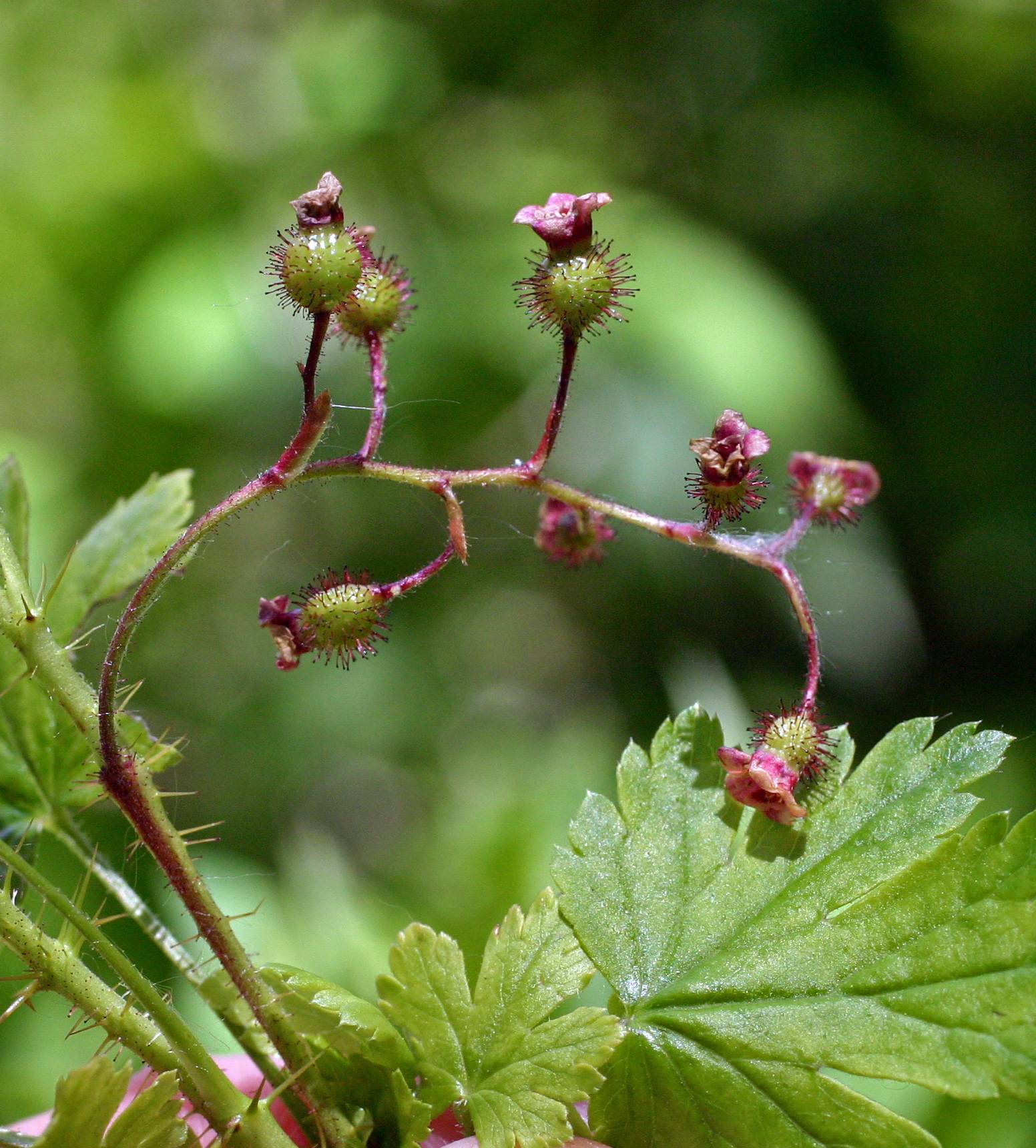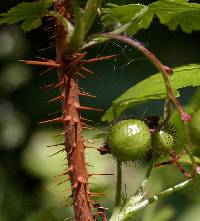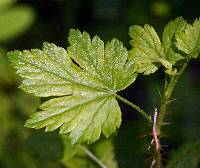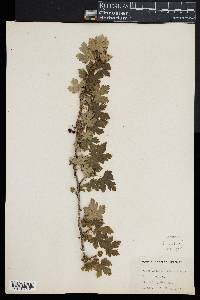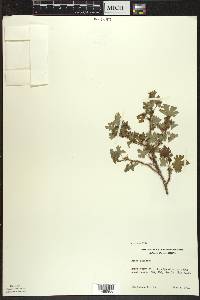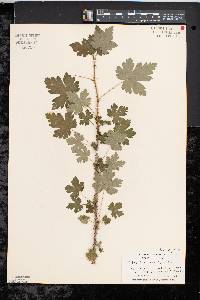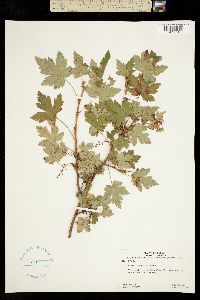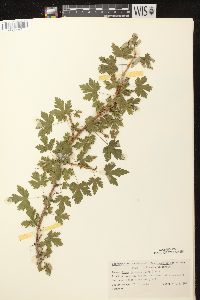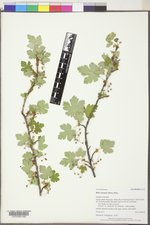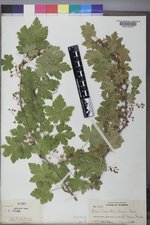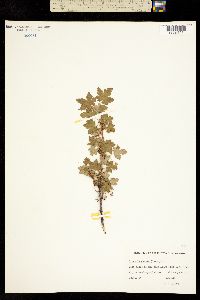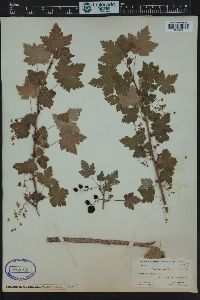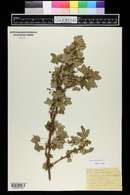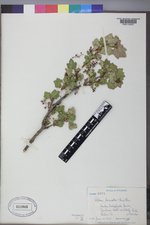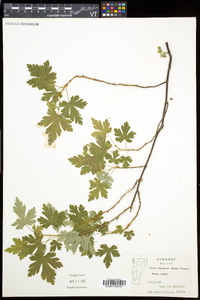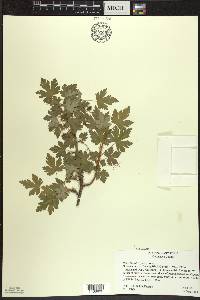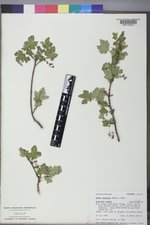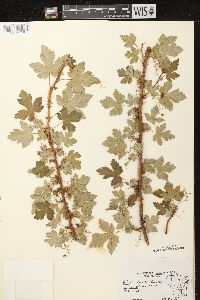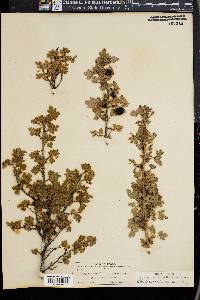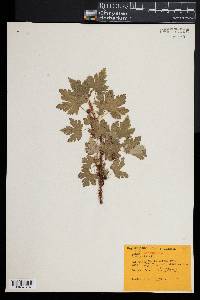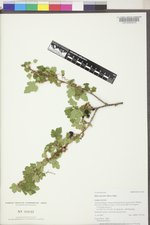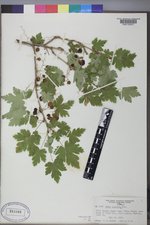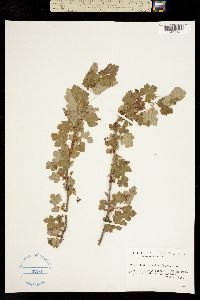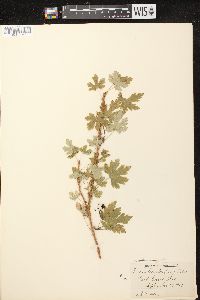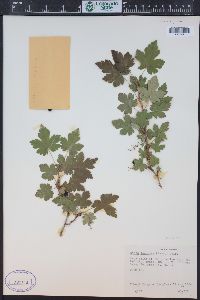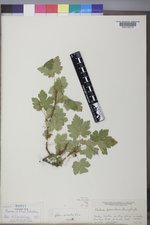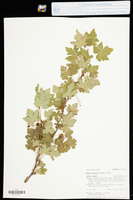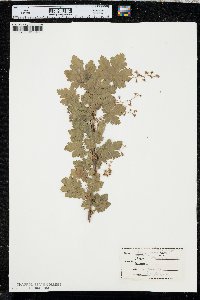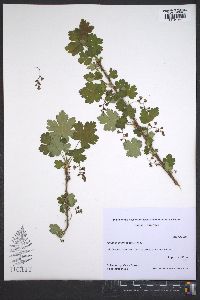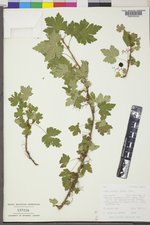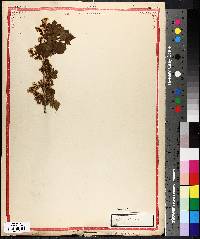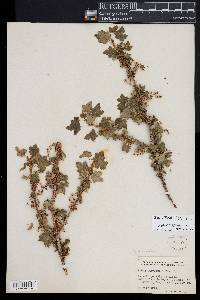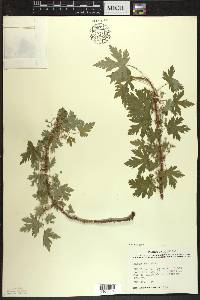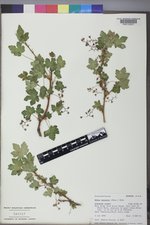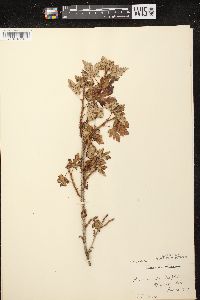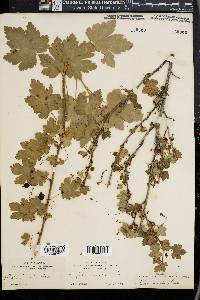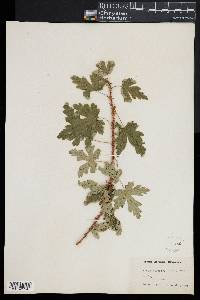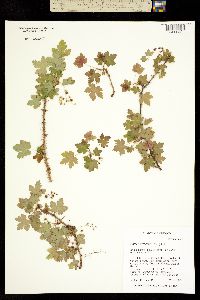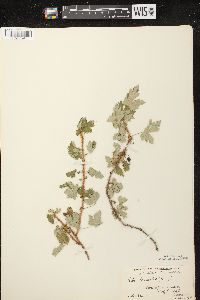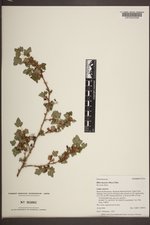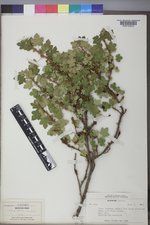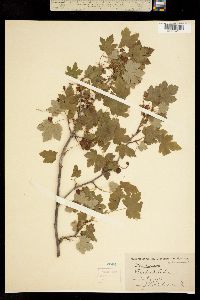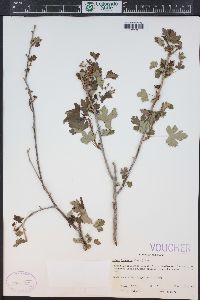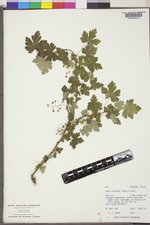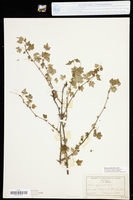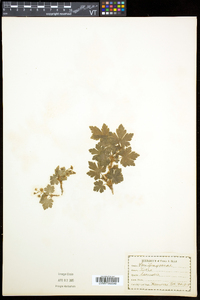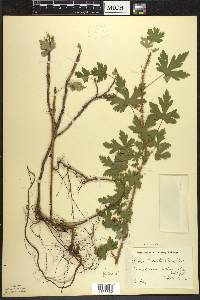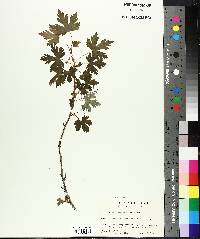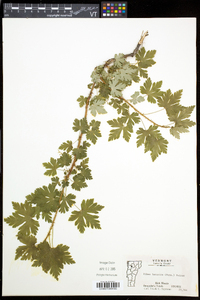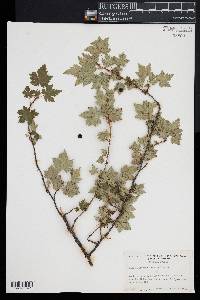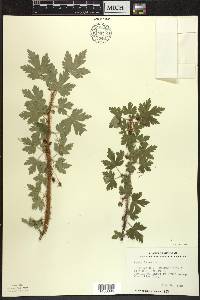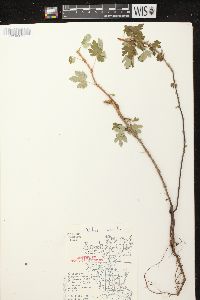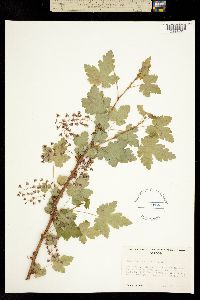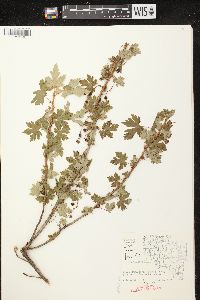Ribes lacustre
|
|
|
|
Family: Grossulariaceae
Bristly Black Gooseberry
|
Plants 1-2 m. Stems erect to spreading or prostrate, finely puberulent, sometimes gla-brous except for prickles, not glandular; spines at nodes 1-3, 3-12 mm; prickles on internodes scattered to dense. Leaves: petiole 0.7-5.5 cm, pubescent, stipitate-glandular; blade pentagonal, 3-7-lobed, cleft 1/2+ to midrib and again irregularly shallowly cleft, 1-7.8 cm, base truncate or cordate, surfaces glabrous or sparsely puberulent, sometimes glandular on main veins abaxially, sometimes with scattered, yellow, sessile, crystalline glands, lobes acutish, margins deeply 1 or 2 times crenate-dentate, apex acute. Inflorescences spreading to pendent, 5-18 (-25)-flowered racemes, 3-4 cm, axis reddish stipitate-glandular and puberulent, flowers evenly spaced. Pedicels jointed (joint sometimes obscured by glands and difficult to see especially on short pedicels; may appear as darker line immediately proximal to ovary), 2-10 mm, glandular-bristly; bracts linear-lanceolate, 1.8-4 mm, puberulent and reddish or purplish stipitate-glandular. Flowers: hypanthium cream to orangish, shallowly saucer-shaped to crateriform, (0.7-)1-1.2(-1.5) mm, glabrous; sepals somewhat overlapping, spreading or reflexed, cream to pale yellowish green or dull reddish brown, reddish color deepening with age, very broadly ovate-oblong, 1.5-3.5 mm; petals widely separated, erect, pale yellowish green distally and reddish proximally to reddish throughout, broadly fan-shaped to semicircular, cuneate-flabellate, not conspicuously revolute or inrolled, 1-1.5(-1.7) mm; nectary disc prominent, pinkish, raised, angled, covering most of ovary; stamens slightly longer than petals; filaments linear, 1.1-1.7 mm, glabrous; anthers yellow, transversely oblong, 0.5-1 mm, broader than long, apex blunt; ovary sparsely to thickly stipitate-glandular with slender, usually reddish- to purplish-tipped hairs, rarely glabrous; styles connate to middle, 1.4-2 mm, glabrous. Berries palatable but insipid, red, becoming black or dark purple, ellipsoid, 4-8(-14) mm, slenderly stipitate-glandular, bristly with reddish stipitate-glandular hairs. 2n = 16. Flowering Apr-Aug. Moist woods, conifer swamps, stream banks, dry forest slopes, subalpine ridges, krummholtz; 0-3400 m; Alta., B.C., Man., N.B., Nfld. and Labr., N.W.T., N.S., Ont., P.E.I., Que., Sask.; Ala., Alaska, Calif., Colo., Conn., Idaho, Ind., Maine, Mass., Mich., Minn., Mont., Nev., N.H., N.J., N.Y., Oreg., Pa., R.I., S.Dak., Utah, Vt., Va., Wash., W.Va., Wis., Wyo. The petals and stamens are inserted on the rim of the pink nectary disc in Ribes lacustre.
Stems very spiny on the internodes, with clusters of longer nodal spines; petioles glandular and hairy; blades deeply 3-5-lobed and coarsely toothed, glabrous or nearly so; racemes loosely spreading or drooping; rachis, pedicels, ovary and fr glandular-bristly; hypanthium above the ovary broadly cupulate, 1 mm, glabrous; sep broadly cuneate-obovate, 2 mm, wider than long; pet flabellate to half-orbicular, 1.5 mm; stamens inserted just above the ovary, equaling the pet; style bifid to the middle; fr dark purple or black; 2n=16. Swamps and wet woods; Lab. to Alas., s. to Mass., Pa., Mich., Minn., and the western cordillera. May, June. (Limnobotrya l.) Gleason, Henry A. & Cronquist, Arthur J. 1991. Manual of vascular plants of northeastern United States and adjacent Canada. lxxv + 910 pp. ©The New York Botanical Garden. All rights reserved. Used by permission. |

